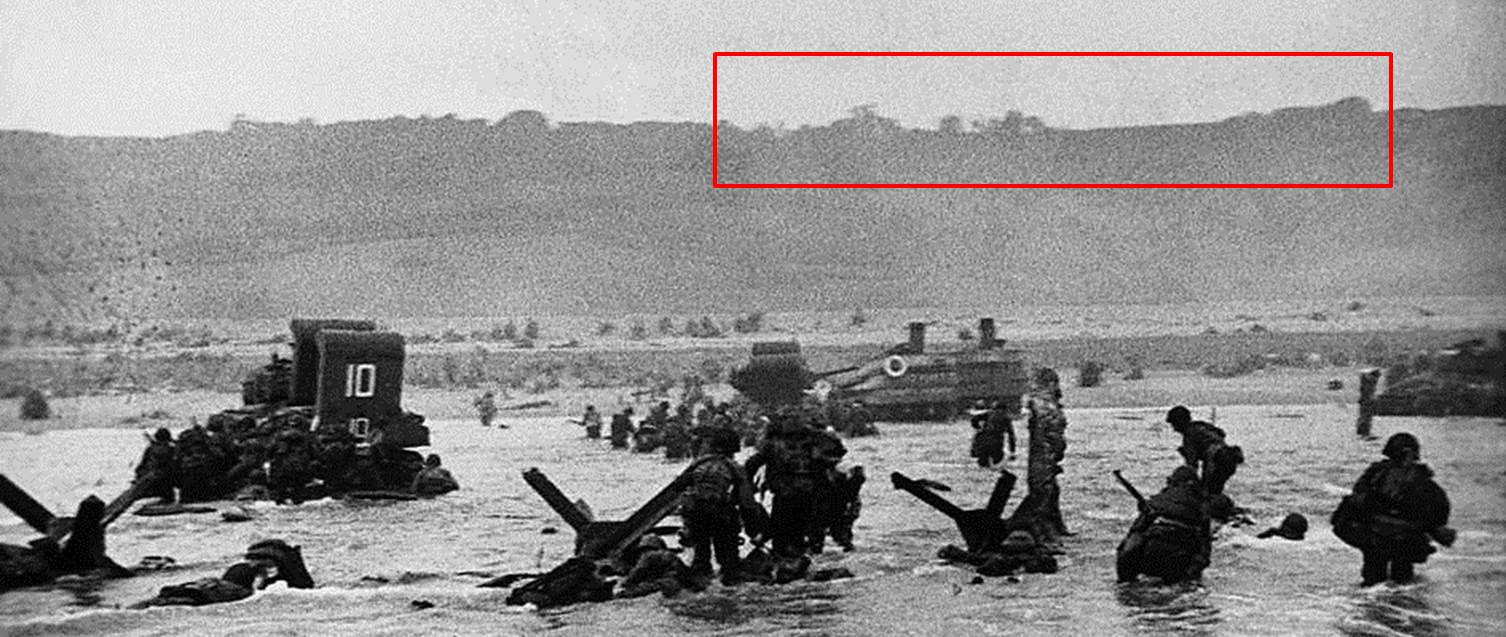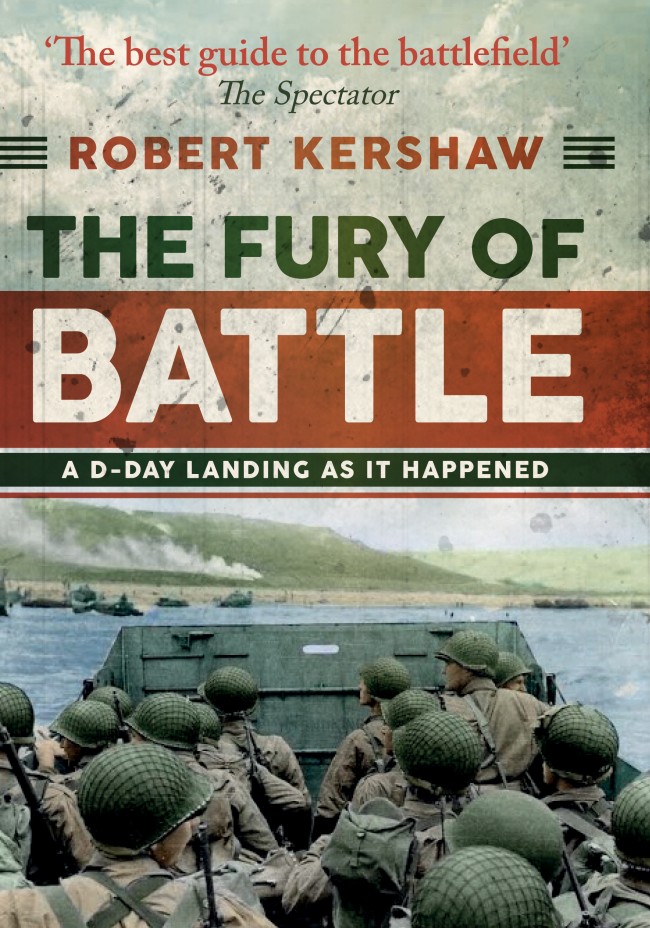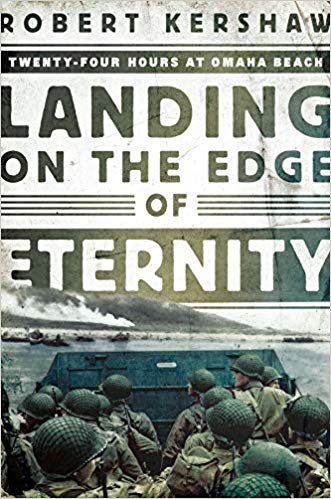 History is A Set of Lies Agreed Upon
History is A Set of Lies Agreed Upon
Some people don’t lie about Capa’s D-Day; they just mindlessly repeat the myth, unwittingly enabling the active liars who propound it, serving their cause as useful idiots. Case in point: “Five Best: Robert Kershaw on the Best Accounts of D-Day,” published by the Wall Street Journal on December 14, 2018. (Unless you have a WSJ subscription, this article has entered their archive, where you can’t access it; instead, find it here at the Wayback Machine.)
Why would this appear just before Christmas? For no good reason that I can determine — that date has no D-Day connection — save for the fact that Pegasus, a British imprint, had just published Kershaw’s second book about D-Day, Landing on the Edge of Eternity: Twenty-Four Hours at Omaha Beach, from which this article derives and for which it served as high-profile promotion.
![]() Said book’s publication date may seem no less inexplicable, until I remind you that not only did it debut the book just ahead of the gift-giving holidays but the 75th anniversary of D-Day will take place on June 6, 2019, less than five months hence. We can expect a veritable flood of invasion-related articles, books, TV shows, movies, and other materials, so Pegasus clearly opted to get the jump on the competition (with the WSJ happily following suit).
Said book’s publication date may seem no less inexplicable, until I remind you that not only did it debut the book just ahead of the gift-giving holidays but the 75th anniversary of D-Day will take place on June 6, 2019, less than five months hence. We can expect a veritable flood of invasion-related articles, books, TV shows, movies, and other materials, so Pegasus clearly opted to get the jump on the competition (with the WSJ happily following suit).
(Apparently there’s a third Kershaw D-Day book, The Fury of Battle: D-Day As It Happened, Hour by Hour, published simultaneously by another U.K. house, Amberley Publishing, the same month. How these two volumes relate — if indeed they don’t simply represent two different versions of the same book — I can’t yet say, having read only Landing on the Edge of Eternity.)
Kershaw, a British Army combat veteran who bills himself at his website as “military historian and battlefield tour guide,” published his first book on the invasion — D-Day: Piercing the Atlantic Wall — in 1993, just before the event’s 50th anniversary. (Also unread by me to date. I hasten to add that he’s no relation to another noted Brit war historian, Alex Kershaw, who researched and wrote the unauthorized 2002 biography of Capa, Blood and Champagne.)
Landing on the Edge of Eternity includes a reconstruction by the author of Capa’s arrival on Easy Red, which I will shortly compare with the investigation conducted by our team. But Kershaw’s uncritical endorsement of Capa’s account in the Wall Street Journal, where he ranks it fourth out of his “Five Best” accounts of D-Day, forewarned me not to get my hopes up:
Slightly Out of Focus
By Robert Capa (1947)
Legendary war photographer Robert Capa’s account of the landing on Omaha Beach, written in the first person, is a remarkable description — all the more so because it’s accompanied by the photographs he took amid the surf at beach level. His commentary bears witness to his journalist’s eye for the incongruous — the mess boys on Capa’s transport served breakfast wearing “immaculate white jackets” with “unusual zest and politeness.” It was all too much for “pre-invasion stomachs.”
His account takes us from London’s “invasion fever” through the tension of briefings, orders and embarkation and the “choppy landing-craft ride to Omaha beach.” His camera-lens-eye view of the assault, which was “very gray for good pictures, but the gray water and the gray sky made the little men, dodging under the surrealistic” anti-invasion obstacles, very striking. Photographs taken lying in the sand bear out the description in the text: “the foreground of my pictures was filled with wet boots and green faces,” while everything above was “filled with shrapnel smoke, burnt tanks and sinking barges.” Capa’s film rolls of D-Day were melted by an overenthusiastic darkroom assistant; only 11 now-iconic images survived.
Rubbish. “Photographs taken lying in the sand bear out the description in the text: ‘the foreground of my pictures was filled with wet boots and green faces,’ while everything above was ‘filled with shrapnel smoke, burnt tanks and sinking barges'”? Capa took no photographs “lying in the sand” — he made the first five from the deck of the landing craft that brought him there, another while standing behind a “hedgehog” obstacle, and the last ones while sheltering behind Armored Assault Vehicle 10. Aside from that, his images do not in any way “bear out the description in the text” — no “wet boots and green faces,” no “burnt tanks and sinking barges.” Just some artillery smoke. Finally, needless to say, no “overenthusiastic darkroom assistant” and no melted negatives, as we have demonstrated conclusively.
Our research began in June 2014 and runs through the present — thus, presumably, available to Kershaw during the period in which he researched the book(s) on which he based this article. How that wealth of data and information escaped the attention of this historian surely requires some explanation.
•
I obtained a copy of Kershaw’s new D-Day book, Landing on the Edge of Eternity, to see what else he has to say about Capa therein. I tried to do so with as open a mind as possible, but approached that task with foreboding, I must confess, the above WSJ piece inevitably coloring my expectations.
The problems with Kershaw’s embrace of the Capa myth manifest themselves almost immediately, when he places Capa aboard the U.S.S. Henrico rather than the U.S.S. Samuel Chase for the channel crossing. This reveals that Kershaw has fallen hook, line, and sinker for the late Richard Whelan’s painfully contorted final version of the Capa D-Day chain of events in his 2007 book This Is War! Robert Capa at Work. No hard evidence puts Capa aboard the Henrico; on the other hand, Capa not only indicates (in his 1947 memoir Slightly Out of Focus) that he crossed in both directions on the Chase, but Capa’s own photos place him clearly aboard the Chase for a briefing in the ship’s gym — a fact that Kershaw mentions in passing, without even attempting to explain the discrepancy.
A bit further on (and, in a historian, this is unforgivable), Kershaw actually changes Capa’s own words to conform Capa’s account to the misleading version concocted by Whelan, Capa’s official biographer. Capa’s description of the June 6 pre-landing shipboard breakfast in Slightly Out of Focus reads as follows:
“The mess boys of the USS Chase wore immaculate white jackets and served hot cakes, sausages, eggs, and coffee with unusual zest and politeness.”
Kershaw revises this to read like this:
“The mess boys of the USS Henrico wore immaculate white jackets and served hot cakes, sausages, eggs, and coffee with unusual zest and politeness.”
Note that he could have achieved the same deceptive effect by substituting an ellipsis — “The mess boys … wore immaculate white jackets” — yet chose instead to boldly rewrite the primary source material to conform it to his chosen narrative. That’s not revisionist historianship; it’s corrupt historianship, inexcusable.

Figure 2. Capa’s negative 32 (detail). Note the configuration of the skyline within the red outline.
•
Kershaw then buys into Capa’s claim (amplified by Whelan) that Capa got to choose the wave with which he went in to the Easy Red sector of Omaha Beach, and opted for the first wave. Kershaw does so despite the fact that Capa’s photos show at least three waves ahead of him on the beach, and the further fact that he was assigned to Col. George Taylor’s 1st Division, 16th Infantry Regiment advance headquarters command, which did not go in until the 13th wave. Not to mention that no press — not even military press — went in with the first wave during the invasion. …
(Part 1 I 2)
•
(For an index of links to all posts in this series, click here.)
•
 Special offer: If you want me to either continue pursuing a particular subject or give you a break and (for one post) write on a topic — my choice — other than the current main story, make a donation of $50 via the PayPal widget below, indicating your preference in a note accompanying your donation. I’ll credit you as that new post’s sponsor, and link to a website of your choosing. Include a note with your snail-mail address (or email it to me separately) for a free signed copy of my 1995 book Critical Focus!
Special offer: If you want me to either continue pursuing a particular subject or give you a break and (for one post) write on a topic — my choice — other than the current main story, make a donation of $50 via the PayPal widget below, indicating your preference in a note accompanying your donation. I’ll credit you as that new post’s sponsor, and link to a website of your choosing. Include a note with your snail-mail address (or email it to me separately) for a free signed copy of my 1995 book Critical Focus!
 But wait! There’s more! Donate now and I’ll include a copy of The Silent Strength of Liu Xia, the catalog of the 2012-13 touring exhibition of photos by the dissident Chinese photographer, artist, and poet, currently in her sixth year of extralegal house arrest in Beijing. The only publication of her photographic work, it includes all 26 images in the exhibition, plus another 14 from the same series, along with essays by Guy Sorman, Andrew Nathan, and Cui Weiping, professor at the Beijing Film Academy.
But wait! There’s more! Donate now and I’ll include a copy of The Silent Strength of Liu Xia, the catalog of the 2012-13 touring exhibition of photos by the dissident Chinese photographer, artist, and poet, currently in her sixth year of extralegal house arrest in Beijing. The only publication of her photographic work, it includes all 26 images in the exhibition, plus another 14 from the same series, along with essays by Guy Sorman, Andrew Nathan, and Cui Weiping, professor at the Beijing Film Academy.








You might want to check out the article in the June 2019 issue of World War II, called “Going over the Top” by William Kays. He was standing next to Capa in a landing craft in the second wave and appears is all 5 of the “from the landing craft bow photos”. I helped him put the article together. It is largely from his book “Letters from a Soldier” as sold by Amazon.
I have found your work to be excellent and should be the model for investigative reporting. Thank you for your work.
Roger Lake
Thanks for your note and good words about our project. Capa actually came in on the 13th wave from the Chase on D-Day, landing on Easy Red at approximately 0820. You’ll find an analysis of William Kays’s claim by our military historian, Charles Herrick, here.